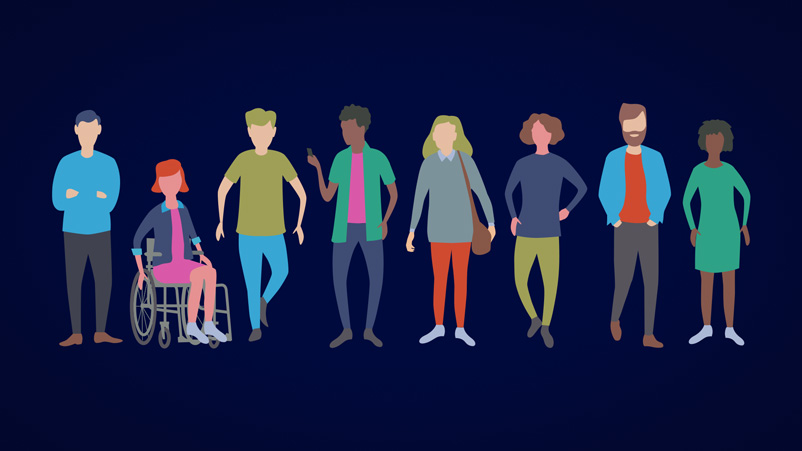Five steps to remove unconscious bias. It’s not what you think, or is it?

Advertising has the power to change perceptions and re-wire our beliefs and our decision making.
I’ll say it: part of my brain is biased, 10 ViacomCBS’ National Creative Director Michael Stanford writes. For some reason, people in advertising recognise that we change others’ perceptions and beliefs but ignore how our own thinking has been shaped. These unconscious patterns are more important, and can be more damaging, than we realise.
Advertising is power (but it’s not always used wisely)
In the world of advertising, truth is fluid. From late night direct response presenters evangelising the healing benefits of a massage chair to ads suggesting fish can be rejected, a soft drink can unify cultures, or a retail purchase can enable a priceless experience. We accept these as good storytelling, creative license, or simply a worthy attempt to avoid boring people to death. Full disclosure – I have worked on all of these campaigns, apart from massage chairs. I’m looking forward to that stage of my career.
We are all aware of the power of memory structures, which explains why you likely just imagined the brands and products I deliberately didn’t mention. Exactly how the Prefrontal Cortex, Hippocampus and Cerebellum juggle the tasks of remembering which brand to choose from remains a mystery.
But we are all aware of the end result. Advertising has the power to change perceptions and re-wire our beliefs and our decision making. But while we readily recognise this power, we often ignore how our own thinking has been shaped. We have unconscious shortcuts to navigate information, we have an attraction to patterns, and our brains automatically find comfort in those who look, think and act like us.
This unconscious bias is in all of us.
I’m going to be really honest: Part of my brain is biased. Just writing those words makes me feel uncomfortable. But we need to acknowledge this to truly shift our thinking and actions. Raising issues on lift walls or adding a mission of inclusion to our email signature are important steps. But that’s just the start. We also need to look deeper at how we think and the way we work.
Bias is not what you think. It’s what you don’t think you are thinking.
The heightened awareness of media responsibility must be applauded. It recognises the cultural influence we have, and the actions we must take to promote a more just and inclusive society. But to truly deliver, we must tackle unconscious bias.
Five steps to changing what we don’t think we are thinking
So what can we do? Here are five ways to tackle the unconscious bias beast:
- Acknowledge there is a problem. We may believe we work in a progressive, liberal-minded industry, but we are further away than we think. ‘Fck the cupcakes’ - an initiative in the creative industry to highlight, discuss and fight misogyny – focusses on direct and meaningful action rather than a pleasant brunch. We need to do more like this.
- Question the way we broadcast and publish. Is there unconscious bias in the casting of a show, the arc of a narrative, or the tone of a presenter? Are we playing to the unconscious bias, stoking a deep prejudice, or provoking a dislike for the different? Are we communicating a point of view that further calcifies prejudiced thinking?
- Raise unconscious bias to the conscious level. This means questioning our decisions and assumptions. Does a brief include unconscious bias via a persona or a consumer insight? ‘Lisa is a mum of two who likes to shop’. Really? Maybe we should end all brainstorms or briefings with a question: Has our unconscious bias affected the outcomes, the ideas, or the research itself? This is not about paralysing the process. On the contrary, we will create better more relatable work.
- Expand our horizons beyond inner cities. Being around people from different regions of Australia is crucial in changing unconscious bias. Not to mention making us better at connecting and understanding all people, of all ages and backgrounds. Recruitment with this in mind must be a priority for our industry.
- Establish training programs to better tackle underlying bias. Recently, I took part in a cultural awareness training session with Mirri Mirri, an Aboriginal-owned company helping all Australians improve understanding of our indigenous cultures. This is part of the ongoing Reconciliation Action Plan at 10 ViacomCBS. Unconscious bias was discussed openly and without judgment. It was an eye opener on how bias permeates society while also looking at ways to address the problem. I truly believe everyone working in our industry should complete this course.
But lastly, let’s slow things down. Unconscious bias seems to thrive when we rush. Take the time to reflect and question. Long term change comes from making the right decisions every day.
As an industry famous for persuasion and our ability to find, exaggerate or promote a truth, let’s make sure we are truthful about bias and are making a conscious effort to change the unconscious.
